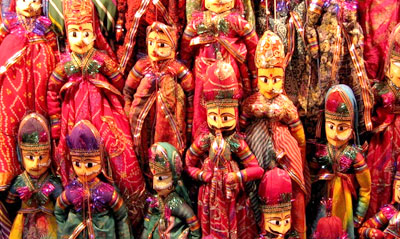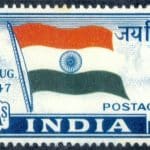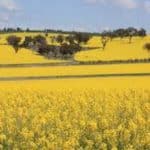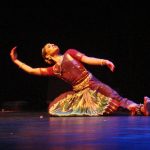- The art of puppetry finds the earliest reference in the Tamil classic ‘Silappadikaaram’ written around the 1st or 2nd century B.C.
- There are four types of Puppetry
- String Puppets
- Shadow Puppets
- Rod Puppets
- Glove Puppets
- String Puppets ( Puppetry )
- Jointed body and limbs that allow movement.
- They are also known as marionettes.
- These are controlled by loosening and pulling the strings attached to the Puppetry .
- They are made of wood, or wire, or cloth stuffed with cotton,rags or sawdust and are usually small.
- Rajasthan, Karnataka, Odisha and Tamil Nadu are some of the regions where this type of puppetry has flourished.
- Example
- Kathputli, Rajasthan- ( Puppetry)

- They are carved from a single piece of wood.
- Oval faces, large eyes, arched eyebrows and large lips are the distinct features.
- They wear long trailing skirts and do not have legs.
- The strings are attached to the fingers of puppeteers and not to any other prop or support.
- Accompanied by a highly dramatized regional music.
- Gopalila Kundhei, Odisha ( Puppetry )
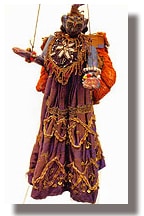
- They are made of light Puppetry wood.
- They have no legs but wear long flowing skirts.
- They have more joints and are easier to manipulate.
- The puppeteers hold a wooden prop, triangular in shape, to which strings are attached for manipulation.
- Their costumes are similar to those worn by actors of the Jatra traditional theatre.
- The music is drawn from the popular tunes of the region and is sometimes influenced by the music of Odissi dance.
-
- Gombeyatta, Karnataka ( Puppetry)

- They have joints at the legs, shoulders, elbows, hips Puppetry and knees.
- They are manipulated by 5-7 strings which are tied to a prop.
- They are styled like the characters of Yakshagana, the traditional theatre of Karnataka.
- The stories are based on Prasangas of the Yakshagana plays.
- The music that accompanies is dramatic and beautifully blends folk and classical elements.
-
- Bommalattam, Tamli Nadu ( Puppetry )

- They are made of wood.
- They combine the techniques of both rod and string puppets.
- The puppeteer wears an iron ring on his head to which the string are tied.
- A few puppets have jointed arms and hands, which are manipulated by rods.
- These are the largest, heaviest and the most articulate of all traditional Indian marionettes.
- Other examples- Tarer or Sutol Putul (WB), Kalasutri Bahulya (Maharashtra),
2. Shadow Puppets ( Puppetry)
- These are flat figures cut out from leather, which has been Puppetry treated to make them translucent.
- They are pressed against a screen with a strong source of light behind it.
- The manipulation between the light and the screen make silhouettes or colorful shadows, as the case may be, for the viewers who sit in front of the screen.
- Odisha, Kerala, Andhra Pradesh, Karnataka & Tamil Nadu.
- Examples:
- Togalu Gombeyatta, Karnataka ( Puppetry)

- They are small in size but generally differ in size according to their social status.
- Larger ones for kings or religious characters and smaller ones for common people or servants.
- Tholu Bommalata, Andhra Pradesh ( Puppetry )

- The puppets are large in size.
- They have jointed waist, shoulders, elbows and knees.
- They are colored on both sides and hence throw colorful Puppetry shadows on the screen.
- The themes of the puppet plays are derived from Ramayana, Mahabharata and Puranas.
- Music is dominantly classical music of the region
- Ravanachhaya, Odisha ( Puppetry )

- The Puppetry have no joints and are small in size.
- They are not colored and hence throw opaque shadows on the screen.
- They are made of deer skin and are conceived in bold dramatic poses.
- Apart from human and animal characters, many props such as trees, mountains, chariots, etc. are also used.
- Other examples: Chamadyache Bahulya (Maharashtra), Tol Pavakoothu (Kerala)
3. Glove Puppets ( Puppetry)
- They are also known as sleeve, hand or palm Puppetry .
- The head is made of either paper mache, cloth or wood, with two hands emerging from just below the neck.
- The rest of the figure consists of a long flowing skirt.
- Its movement is controlled by the human hand. The first finger is inserted in the head and the middle finger & the thumb become the two arms of the puppet.
- It is popular in Uttar Pradesh, Odisha, West Bengal and Kerala.
- In UP, the themes are usually based on social subjects.
- In Odisha, themes are based on stories of Radha and Krishna. Dholak is also used in Odisha.
- Dialogues play an important role.
- Example:
- Pavakoothu (Pavakathakali), Kerala ( Puppetry)
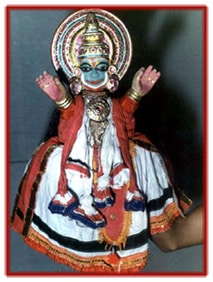
- It is influenced by Kathakali.
- Height of a Puppetry varies from 1-2 feet.
- The head and the arms are carved out of wood and joined together with thick cloth, cut and stitched into a small bag.
- The face of the puppets are decorated with paints, small and thin pieces of gilded tin, feathers of peacock etc.
- The musical instruments used during the performance are Chenda, Chengila, Ilathalam and Shankha-the conch.
- Themes are based on episodes from Ramayana and Mahabharata.
- Other examples- Sakhi Naach (Odisha), Beni Putul or Bener Putul (West Bengal).
4. Rod Puppetry
- These are extension of glove puppets, but often much larger and supported & manipulated by rods from below.
- Found mostly in West Bengal and Odisha.
- Examples
- Putul Nach, West Bengal

Also Read:-Geographical Indicators (GI)- Handicraft (Part-2)
- The puppets are carved from wood.
- They are about 3-4 feet in height and are costumed like the actors of Jatra theatre.
- They mostly have three joints.
- The puppeteers themselves sing and deliver the stylized prose dialogues along with a group of musicians.
- The puppets are manipulated by a bamboo-made hub tied firmly to the waist of the puppeteer on which the rod holding the puppet is placed.
- The puppeteers themselves move and dance imparting corresponding movements to the puppets.
- Themes are social issues.
- Yampuri, Bihar

- The puppets are made of wood.
- Unlike those of west Bengal and Odisha, the puppets of Bihar are in one piece and have no joints.
- As a result, their manipulation is difficult.
- Other Examples- Kathi Kundei (odisha)

